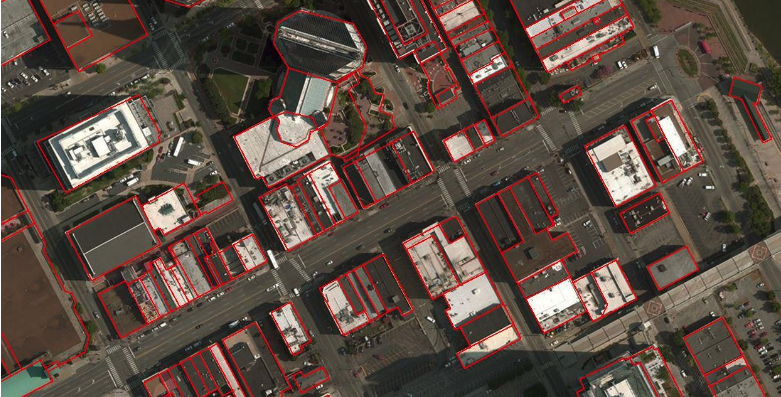How Augmented Reality and Building Information Modeling Benefits AEC Professionals
 Architects, engineers, and construction (AEC) professionals are continually tasked with designing and constructing new, smarter buildings. Geospatial technology is especially useful as Building Information Modeling (BIM) visualizes the complete project and provides a 3D blueprint for execution.
Architects, engineers, and construction (AEC) professionals are continually tasked with designing and constructing new, smarter buildings. Geospatial technology is especially useful as Building Information Modeling (BIM) visualizes the complete project and provides a 3D blueprint for execution.
The real key, however, is using augmented reality. With real estate at a premium in many cities, the pressure is on to design facilities that use underground space for parking, storage, or other services without impacting the underground networks of natural gas, water/sewer, and telephone/fiber-optics. Some of this buried infrastructure may only be known through antiquated maps and inaccurate word of mouth.
Enhanced views and outcomes
Augmented reality combines GIS, virtual reality, and location technology to create superimposed, computer-generated information onto objects in the physical world. When dataset and technology workflows tie into augmented reality, the information is visually relatable to the human mind. Utility workers can “see through” the ground, viewing consistently accurate 3D imagery of networks.
This informs decision making (no more guesswork), improves communication, minimizes costly mistakes, helps eliminate danger to workers, and enhances ongoing maintenance within the built environment.
The big benefits
There are many advantages of bringing augmented reality into BIM. Architects and designers visualize their BIM models at tabletop scale, review them for feasibility and aesthetics, and quickly identify and evaluate design options. Construction professionals easily see how to organize materials, where to place walls/doors, and how to route HVAC ducts, plumbing, and electrical conduits.
During inspection, a visual comparison shows “as designed” versus “as built” along with a safety checklist for that specific location. Augmented reality’s hands-free use allows operations/maintenance personnel to view building models, manuals, work orders/instructions, and machinery schematics. Renovations are easier, too; an augmented reality wearable shows hidden infrastructure (beams, ducts, pipes, etc.), and clients can see redesigns in the planning stage.
Staying on the same page
Perhaps the most powerful aspect of augmented reality in BIM-specific use cases may be keeping all stakeholders on the same page to make jobs safer, more efficient, and more productive. Here are three examples:
Real-time Maintenance Data Visualization
Looking into a BIM-mapped building’s walls (not relying on building plans or blueprints) allows problems and obstacles to be addressed. Plus, information can be updated in real time and maintenance professionals can log detailed notes.
Increased Efficiency/Accuracy of Plans in the Field
On active job sites, engineers, laborers, and supervisors can visualize project elements on demand. This maximizes collaboration, so different disciplines communicate clearly and effectively. No more confusion about materials or installation.
Collaboration on Construction Plans
When BIM models are rendered with an augmented reality application in mind, anyone (even those with no engineering/construction background) can simply point the device wherever inspection is needed. This helps everyone communicate better than using conventional means.
Cutting-edge technology everyone can use
The most recent developments in BIM-to-AR technology allows full-resolution 3D data of any size to be optimized so it can be delivered and rendered on untethered mobile devices, such as iPads and smartphones.
Construction field teams can enjoy live-scale experiences that communicate the feeling of scale. It’s a real-world situation enhanced by virtual content. In fact, all stakeholders on the actual jobsite can, in real time, verify assemblies, fit, scale, finishes and more through the BIM-based augmented reality. This technology drastically reduces any re-work because all issues are communicated on-site.
It’s incredible to imagine where augmented reality technology may go moving forward. A virtual copy of every building on the planet could be scanned and converted into 3D. This new virtual world could be available for billions of users; anyone with a mobile connection. For AEC professionals, it would be a digital, augmented reality view of the world and all of its 3D data.
Accessing BIM with augmented reality feels like the future of the AEC industry. Embracing it now gives you a leg up in achieving higher efficiency projects and loyal customers. Ready to discover more innovations? Get your copy of Emerging Trends in Location Technology, a guide to what’s currently trending and what’s on the horizon in location technology.
Subscribe to ADCi's Blog
Related Posts

Using Map Data to Mitigate the Risk and Expense of Wildfire Insurance Claims

ADCi and BuildingFootprintUSA: Map Data Solutions for Indoor Spaces

